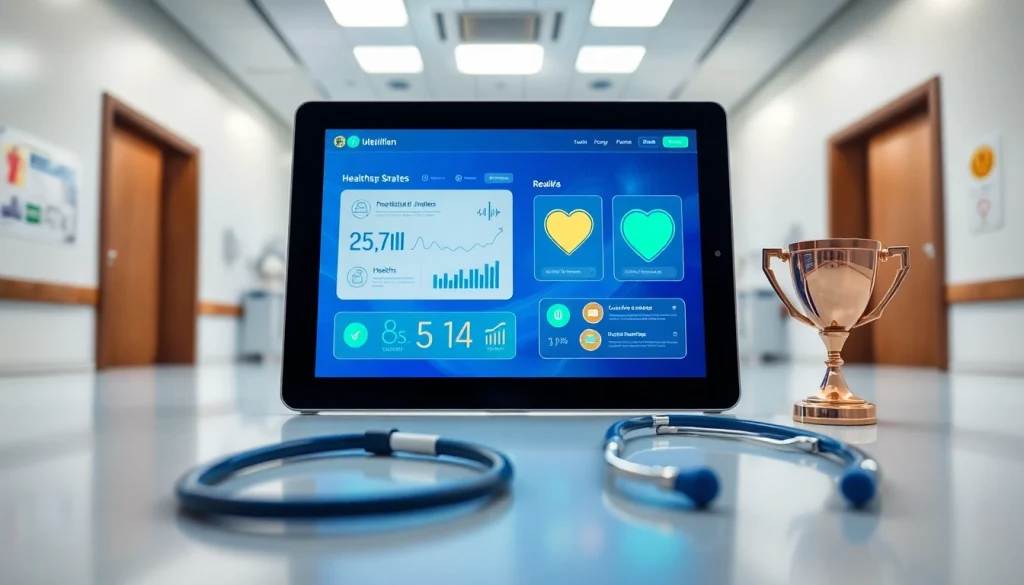
The Basics of Healthcare Gamification
Defining Healthcare Gamification
Healthcare gamification integrates the principles of game design into healthcare contexts to enhance user engagement, motivation, and overall outcomes. This approach uses elements such as points, badges, leaderboards, and challenges to encourage participation from patients in their own healthcare journeys. The objective is to make healthcare interactions more engaging and enjoyable, ultimately improving health literacy and promoting healthier behaviors.
Benefits of Gamifying Patient Engagement
One of the most significant advantages of healthcare gamification is its capacity to boost patient engagement. When patients feel more connected to their health management through interactive tools, they are more likely to adhere to treatment plans, attend follow-up appointments, and maintain healthier lifestyles. For instance, gamification can transform mundane tasks, such as taking medication or tracking physical activity, into engaging challenges that reward patients for meeting specific health milestones. Moreover, it has been shown to decrease dropout rates in digital health programs and increase the time spent interacting with health-related content.
Key Components and Features of Successful Examples
Successful healthcare gamification solutions often incorporate several key components. Firstly, clear objectives help users understand the purpose of the gamified experience. Secondly, the elements of competition and collaboration can foster a sense of community, encouraging users to engage with one another (as seen in platforms like MyFitnessPal). Finally, integrating immediate feedback loops into the user experience enhances motivation, as individuals can see their progress and achievements in real-time.
Understanding User Needs in Healthcare
Identifying Patient Motivations
To effectively implement gamification in healthcare, it is crucial to understand what motivates patients. Some patients may respond positively to competition, aspiring to outperform their peers, while others may be more motivated by personal achievement and self-improvement. Health app developers need to incorporate elements that resonate with different user segments, as motivation can be deeply personal and vary across demographics and health conditions.
Overcoming Barriers to Adoption
Barrier identification is integral to successful gamification strategies. Often, patients face obstacles such as technological literacy, lack of time, or apprehension toward new health technologies. Addressing these barriers requires comprehensive user research and may involve designing user-friendly interfaces that provide guidance and support. Moreover, healthcare providers can facilitate smoother transitions to gamified solutions through education and support programs.
Designing User-Centric Interfaces
User-centric design is vital for gamified health solutions. Interfaces should be intuitive, visually appealing, and inclusive, catering to users of all ages and backgrounds. Utilizing accessibility features, engaging narratives, and positive reinforcement techniques can enhance the overall user experience, encouraging consistent use and improving patient engagement. By prioritizing user feedback and iterating based on real-world usability testing, developers can create impactful interactions that resonate with patients.
Implementation Strategies for Healthcare Gamification
Steps to Develop a Gamification Framework
Building a comprehensive gamification framework requires a series of deliberate steps. Initially, stakeholders must define the goals and objectives of the gamified solution, clearly understanding what behaviors are being targeted. Then, designing the user experience around those behaviors helps to develop game mechanics that effectively promote engagement. Finally, piloting the solution with a small user group allows for necessary adjustments based on user experiences before full-scale deployment.
Integrating Technology for Optimal Results
Integration of cutting-edge technology is essential for maximizing the potential of healthcare gamification. In particular, leveraging wearable devices can provide real-time data that feeds back into the gamified experience. For instance, smartwatches can track physical activities, and this data can then translate into points or rewards within a health app. Additionally, utilizing machine learning algorithms to personalize user experiences further enhances engagement, offering tailored challenges based on individual behavior and preferences.
Best Practices for Engaging Health Content
Creating engaging health content is crucial for keeping users motivated. Content that combines educational elements with interactive features is most effective. Infographics, quizzes, and short videos that educate users about health topics while incorporating game mechanics keep engagement levels high. Providing regular updates and introducing new challenges can help maintain users’ interest over time, fostering long-term adherence to treatment and health management strategies.
Measuring Success in Gamified Solutions
Defining Key Performance Indicators (KPIs)
A robust gamification strategy demands clear metrics to evaluate success. Key Performance Indicators (KPIs) should encompass a combination of user engagement statistics, such as the number of active users, completion rates for gamified challenges, and the frequency of interactions with the app. Patient outcomes, including improvements in adherence to medication or lifestyle changes, also serve as critical metrics of efficacy.
Analyzing Patient Feedback and Data
Continuous improvement relies heavily on patient feedback. Collecting qualitative data through surveys and focus groups provides insights into user experiences and areas for improvement. Additionally, leveraging quantitative data collected from the gamified app can highlight trends in user engagement and health outcomes, allowing developers to adjust strategies dynamically. Implementing regular feedback loops ensures that gamified solutions adapt to meet evolving user needs.
Iterating Based on Performance Metrics
Iterative design is a hallmark of successful gamification strategies. By continuously analyzing performance metrics and user feedback, developers can refine and enhance the gamified experience. Utilizing A/B testing allows developers to experiment with different features and game mechanics, helping to identify what resonates with users. This kind of responsive approach ensures that the gamification remains relevant and effective over time.
Future Trends in Healthcare Gamification
Emerging Technologies Shaping Healthcare
As technology continues to advance, several trends loom on the horizon for healthcare gamification. Virtual and augmented reality applications are poised to transform training and patient engagement experiences. These technologies can create immersive environments where patients can practice skills or manage chronic conditions in a controlled, gamified setting. Furthermore, integration of artificial intelligence can personalize user experiences, crafting adaptive challenges based on real-time data analysis.
Predictions for Patient Engagement Strategies
Looking forward, patient engagement strategies will likely incorporate more comprehensive and individualized approaches, focusing on tailored content and experiences. This adaptation may include more significant integration of social networking elements within gamified platforms, fostering community among users. Additionally, altruistic gamification—wherein users engage in activities that contribute to broader health initiatives—may emerge, creating a sense of purpose alongside personal health improvement.
Staying Ahead of the Competition
To remain competitive in the ever-evolving healthcare landscape, developers must stay informed about both user needs and technological advancements. Innovative and flexible gamification solutions will play a critical role in attracting and retaining patient engagement. Adapting to the changing healthcare environment and addressing emerging patient expectations will be key strategies for success in the future of healthcare gamification.



